Indexed in: ESCI, Scopus, PubMed,
PubMed Central, CAS, DOAJ, KCI
PubMed Central, CAS, DOAJ, KCI
FREE article processing charge

Previous issues
- Page Path
- HOME > Browse Articles > Previous issues
Review articles
- Intraoperative consultation for ovarian tumors
- Insun Kim
- Yeungnam Univ J Med. 2019;36(3):163-182. Published online June 11, 2019
- DOI: https://doi.org/10.12701/yujm.2019.00227

- 10,595 View
- 174 Download
- 2 Crossref
-
 Abstract
Abstract
 PDF
PDF - The primary function of intraoperative frozen consultation is to provide an as accurate and prompt diagnosis as possible during surgery and to guide the surgeon in further management. However, the evaluation of frozen section (FS) is sometimes difficult because of suboptimal tissue quality and frozen artifacts compared with routinely processed tissue section. The pathologist responsible for the FS diagnosis requires experience and good judgment. Ovarian tumors are a heterogeneous group of tumors including primary surface epithelial tumors, germ cell tumors and sex cord-stromal tumors, secondary tumors, and other groups of tumors of uncertain histogenesis or nonspecific stroma. Intraoperative FS is a very important and reliable tool that guides the surgical management of ovarian tumors. In this review, the diagnostic key points for the pathologist and the implication of the FS diagnosis on the operator’s decisions are discussed.
-
Citations
Citations to this article as recorded by- Gross mucinous multinodular appearance aids in the identification of ovarian metastases in low-grade appendiceal mucinous neoplasms during intraoperative consultation
Hiroshi Yoshida, Hiroki Tanaka, Takafumi Tsukada, Naoko Abeto, Mayumi Kobayashi-Kato, Yasuhito Tanase, Masaya Uno, Mitsuya Ishikawa, Tomoyasu Kato
Annals of Diagnostic Pathology.2021; 50: 151641. CrossRef - Diagnostic Accuracy and Discrepancies of Frozen Section Analysis in a Colombian Intermediate Care Center
Anggi Margarita Velez Bohorquez, Daniel Javier Vélez Bohórquez , Mabel Elena Bohórquez Lozano, Angela Cecilia Rios
Universitas Médica.2021;[Epub] CrossRef
- Gross mucinous multinodular appearance aids in the identification of ovarian metastases in low-grade appendiceal mucinous neoplasms during intraoperative consultation
- Cognitive dysfunctions in individuals with diabetes mellitus
- Hye-Geum Kim
- Yeungnam Univ J Med. 2019;36(3):183-191. Published online July 24, 2019
- DOI: https://doi.org/10.12701/yujm.2019.00255

- 14,100 View
- 420 Download
- 37 Crossref
-
 Abstract
Abstract
 PDF
PDF - Some patients with type 1 and type 2 diabetes mellitus (DM) present with cognitive dysfunctions. The pathophysiology underlying this complication is not well understood. Type 1 DM has been associated with a decrease in the speed of information processing, psychomotor efficiency, attention, mental flexibility, and visual perception. Longitudinal epidemiological studies of type 1 DM have indicated that chronic hyperglycemia and microvascular disease, rather than repeated severe hypoglycemia, are associated with the pathogenesis of DM-related cognitive dysfunction. However, severe hypoglycemic episodes may contribute to cognitive dysfunction in high-risk patients with DM. Type 2 DM has been associated with memory deficits, decreased psychomotor speed, and reduced frontal lobe/executive function. In type 2 DM, chronic hyperglycemia, long duration of DM, presence of vascular risk factors (e.g., hypertension and obesity), and microvascular and macrovascular complications are associated with the increased risk of developing cognitive dysfunction. The pathophysiology of cognitive dysfunction in individuals with DM include the following: (1) role of hyperglycemia, (2) role of vascular disease, (3) role of hypoglycemia, and (4) role of insulin resistance and amyloid. Recently, some investigators have proposed that type 3 DM is correlated to sporadic Alzheimer’s disease. The molecular and biochemical consequences of insulin and insulin-like growth factor resistance in the brain compromise neuronal survival, energy production, gene expression, plasticity, and white matter integrity. If patients claim that their performance is worsening or if they ask about the effects of DM on functioning, screening and assessment are recommended.
-
Citations
Citations to this article as recorded by- Diabetic Encephalopathy: Role of Oxidative and Nitrosative Factors in Type 2 Diabetes
Debashree Mazumdar, Santosh Singh
Indian Journal of Clinical Biochemistry.2024; 39(1): 3. CrossRef - Nephroprotective properties of Achillea millefolium green-formulated Au NPs in streptozotocin-induced diabetic nephropathy in mice: Introducing a novel therapeutic drug for the treatment of nephropathy
Nana Li, Xiu Wang, Shanshan Kong
Inorganic Chemistry Communications.2024; 161: 112103. CrossRef - Changes in selected hematological parameters in patients with type 1 and type 2 diabetes: a systematic review and meta-analysis
Getachew Mesfin Bambo, Daniel Asmelash, Ermiyas Alemayehu, Alemu Gedefie, Tadesse Duguma, Samuel Sahile Kebede
Frontiers in Medicine.2024;[Epub] CrossRef - A new nomogram model for the individualized prediction of mild cognitive impairment in elderly patients with type 2 diabetes mellitus
Yuanyuan Jiang, Xueyan Liu, Huiying Gao, Jingzheng Yan, Yingjuan Cao
Frontiers in Endocrinology.2024;[Epub] CrossRef - Metformin Prevents NDEA-Induced Memory Impairments Associated with Attenuating Beta-Amyloid, Tumor Necrosis Factor-Alpha, and Interleukin-6 Levels in the Hippocampus of Rats
Teresa Ponce-Lopez, José Antonio González Álvarez Tostado, Fernando Dias, Keren Happuck Montiel Maltez
Biomolecules.2023; 13(9): 1289. CrossRef - Quercetin: an effective polyphenol in alleviating diabetes and diabetic complications
Lei Yan, Mostafa Vaghari-Tabari, Faezeh Malakoti, Soheila Moein, Durdi Qujeq, Bahman Yousefi, Zatollah Asemi
Critical Reviews in Food Science and Nutrition.2023; 63(28): 9163. CrossRef - Hyperglycemic microenvironment compromises the homeostasis of communication between the bone-brain axis by the epigenetic repression of the osteocalcin receptor, Gpr158 in the hippocampus
Ericka Patricia da Silva, Geórgia da Silva Feltran, Sérgio Alexandre Alcântara dos Santos, Rodrigo Cardoso de Oliveira, Rahyza I.F. Assis, Luis Antônio Justulin Junior, Denise Carleto Andia, Willian F. Zambuzzi, Alexandra Latini, Rodrigo A. Foganholi da S
Brain Research.2023; 1803: 148234. CrossRef - Research Progress on Lipocalin-2 in Diabetic Encephalopathy
Wenjie Zhang, Shihong Chen, Xianghua Zhuang
Neuroscience.2023; 515: 74. CrossRef - The Management of Diabetes Mellitus Using Medicinal Plants and Vitamins
Clement G. Yedjou, Jameka Grigsby, Ariane Mbemi, Daryllynn Nelson, Bryan Mildort, Lekan Latinwo, Paul B. Tchounwou
International Journal of Molecular Sciences.2023; 24(10): 9085. CrossRef - Gender differences in cognitive function and its associated factors among older adults with type 2 diabetes
Hua-Fen Chen, Ju Ying Jiang, Mei-Hsiu Chen, Rong Lin, Seng Wei Ooi Jerence, Chin-Huan Chang, Cheng-Chen Chou
Geriatric Nursing.2023; 52: 165. CrossRef - Exploring the Potential of Antidiabetic Agents as Therapeutic Approaches for Alzheimer's and Parkinson's Diseases: A Comprehensive Review
Mahima Koshatwar, Sourya Acharya, Roshan Prasad, Tejaswee Lohakare, Mayur Wanjari, Avinash B Taksande
Cureus.2023;[Epub] CrossRef - Isolation and characterization of bacteria from diabetic foot ulcer: amputation, antibiotic resistance and mortality rate
Muamar M. A. Shaheen, Sewar Al Dahab, Maryiam Abu Fada, Rawand Idieis
International Journal of Diabetes in Developing Countries.2022; 42(3): 529. CrossRef - Genetic mutations of APOEε4 carriers in cardiovascular patients lead to the development of insulin resistance and risk of Alzheimer's disease
Komal Jabeen, Kanwal Rehman, Muhammad Sajid Hamid Akash
Journal of Biochemical and Molecular Toxicology.2022;[Epub] CrossRef - Aqueous Ajwa dates seeds extract improves memory impairment in type-2 diabetes mellitus rats by reducing blood glucose levels and enhancing brain cholinergic transmission
Vasudevan Mani, Minhajul Arfeen, Sultan Sajid, Yasser Almogbel
Saudi Journal of Biological Sciences.2022; 29(4): 2738. CrossRef - Diabetes Mellitus-Related Neurobehavioral Deficits in Mice Are Associated With Oligodendrocyte Precursor Cell Dysfunction
Li-Ping Wang, Jieli Geng, Chang Liu, Yuyang Wang, Zhijun Zhang, Guo-Yuan Yang
Frontiers in Aging Neuroscience.2022;[Epub] CrossRef - Single-Cell Sequencing Analysis of the db/db Mouse Hippocampus Reveals Cell-Type-Specific Insights Into the Pathobiology of Diabetes-Associated Cognitive Dysfunction
Shizhan Ma, Wenkai Bi, Xueying Liu, Shangbin Li, Yaxin Qiu, Chengcheng Huang, Renjun Lv, Qingqing Yin
Frontiers in Endocrinology.2022;[Epub] CrossRef - Impact of time in range during hospitalization on clinical outcomes in diabetic patients with toe amputation: a propensity score matching analysis
Su Li, Ze-Xin Huang, Dong-hao Lou, Ye-Yong Jiang, Sheng Zhao
BMC Surgery.2022;[Epub] CrossRef - Aberrant brain functional networks in type 2 diabetes mellitus: A graph theoretical and support-vector machine approach
Lin Lin, Jindi Zhang, Yutong Liu, Xinyu Hao, Jing Shen, Yang Yu, Huashuai Xu, Fengyu Cong, Huanjie Li, Jianlin Wu
Frontiers in Human Neuroscience.2022;[Epub] CrossRef - Does diabetes affect the risk of involvement in a motor vehicle crash?
Jamie Dow, Lucie Boucher, David Carr, Judith L. Charlton, Linda Hill, Sjaan Koppel, Roy Lilley, Richard Marotolli, Desmond O'Neill, Mark Rapoport, Christine Roy, Neil Swirsky, Vincent Woo, Emmanuelle Gagné, Claude Giroux, Tamara Rader
Journal of Transport & Health.2022; 27: 101509. CrossRef - No Effects of Acute Psychosocial Stress on Working Memory in Older People With Type 2 Diabetes
Lorena Vallejo, Mariola Zapater-Fajarí, Teresa Montoliu, Sara Puig-Perez, Juan Nacher, Vanesa Hidalgo, Alicia Salvador
Frontiers in Psychology.2021;[Epub] CrossRef - Neurovascular coupling alterations in type 2 diabetes: a 5-year longitudinal MRI study
Yang Zhang, Xiaolu Zhang, Guangyang Ma, Wen Qin, Jiayang Yang, Jiahui Lin, Quan Zhang
BMJ Open Diabetes Research & Care.2021; 9(1): e001433. CrossRef - Ameliorative effects of endurance training and Matricaria chamomilla flowers hydroethanolic extract on cognitive deficit in type 2 diabetes rats
Ali Heidarianpour, Fereshteh Mohammadi, Maryam Keshvari, Naser Mirazi
Biomedicine & Pharmacotherapy.2021; 135: 111230. CrossRef - The link between nutrition and Alzheimer’s disease: from prevention to treatment
Laís Bhering Martins, Ana Letícia Malheiros Silveira, Antonio Lúcio Teixeira
Neurodegenerative Disease Management.2021; 11(2): 155. CrossRef - Peripheral Polyneuropathy and Cognitive Impairment in Type II Diabetes Mellitus
Rasha Elbialy Elsharkawy, Ghada Saed Abdel Azim, Marwa Abdellah Osman, Hend Maghraby Maghraby, Rehab Abdelfattah Mohamed, Eman Mahmoud Abdelsalam, Eman Elshohat Ebrahem, Nora Mohamed Ahmed Seliem
Neuropsychiatric Disease and Treatment.2021; Volume 17: 627. CrossRef - SLC40A1 Mediates Ferroptosis and Cognitive Dysfunction in Type 1 Diabetes
Lijun Hao, Jun Mi, Liping Song, Yinnan Guo, Yanli Li, Yiru Yin, Ce Zhang
Neuroscience.2021; 463: 216. CrossRef - Relationship between peripheral neuropathy and cognitive performance in the elderly population
Yu-Jen Lin, Tung-Wei Kao, Wei-Liang Chen
Medicine.2021; 100(20): e26071. CrossRef - The Association Between Diabetes Mellitus and Mild Behavioral Impairment Among Mild Cognitive Impairment: Findings from Singapore
See Ann Soo, Kok Pin Ng, Fennie Wong, Seyed Ehsan Saffari, Chathuri Yatawara, Zahinoor Ismail, Nagaendran Kandiah
Journal of Alzheimer's Disease.2021; 82(1): 411. CrossRef - Repurposing of Anti-Diabetic Agents as a New Opportunity to Alleviate Cognitive Impairment in Neurodegenerative and Neuropsychiatric Disorders
Qian Chen, Ting Cao, NaNa Li, Cuirong Zeng, Shuangyang Zhang, Xiangxin Wu, Bikui Zhang, Hualin Cai
Frontiers in Pharmacology.2021;[Epub] CrossRef - Mitochondrial remodelling—a vicious cycle in diabetic complications
Bhoomika Sherkhane, Gundu Chayanika, Anika Sood, Dharmendra Kumar Khatri, Shashi Bala Singh
Molecular Biology Reports.2021; 48(5): 4721. CrossRef - The Association between the Binding Processes of Working Memory and Vascular Risk Profile in Adults
Eirini Bika, Despina Moraitou, Elvira Masoura, George Kolios, Georgia Papantoniou, Maria Sofologi, Vasileios Papaliagkas, Georgios Ntritsos
Brain Sciences.2021; 11(9): 1140. CrossRef - The effect of cordycepin on brain oxidative stress and protein expression in streptozotocin-induced diabetic mice
Krittika SRISUKSAI, Kongphop PARUNYAKUL, Narumon PHAONAKROP, Sittiruk ROYTAKUL, Wirasak FUNGFUANG
Journal of Veterinary Medical Science.2021; 83(9): 1425. CrossRef - The Candidate Schizophrenia Risk Gene Tmem108 Regulates Glucose Metabolism Homeostasis
Jianbo Yu, Xufeng Liao, Yanzi Zhong, Yongqiang Wu, Xinsheng Lai, Huifeng Jiao, Min Yan, Yu Zhang, Chaolin Ma, Shunqi Wang
Frontiers in Endocrinology.2021;[Epub] CrossRef - Impact of diabetes on the accuracy and speed of accessing information from episodic and working memory
Selene Cansino, Frine Torres-Trejo, Cinthya Estrada-Manilla, Eira Castellanos-Domínguez, Ana Zamora-Olivares, Silvia Ruiz Velasco, Jim Grange
Cogent Psychology.2021;[Epub] CrossRef - Ингибиторы натрий-глюкозного котранспортера способны положительно влиять на состояние головного мозга
Олег Леонидович Колесников , Алла Алексеевна Колесникова , Юлия Олеговна Тарабрина
Естественные и Технические Науки.2021; (№11): 149. CrossRef - Melatonin: new insights on its therapeutic properties in diabetic complications
Mohammad Hossein Pourhanifeh, Azam Hosseinzadeh, Ehsan Dehdashtian, Karim Hemati, Saeed Mehrzadi
Diabetology & Metabolic Syndrome.2020;[Epub] CrossRef - Diabetic encephalopathy causes the imbalance of neural activities between hippocampal glutamatergic neurons and GABAergic neurons in mice
Chun Wang, Juan Li, Shidi Zhao, Li Huang
Brain Research.2020; 1742: 146863. CrossRef - Link between Diabetes and Alzheimer’s Disease Due to the Shared Amyloid Aggregation and Deposition Involving Both Neurodegenerative Changes and Neurovascular Damages
Gabriela Dumitrita Stanciu, Veronica Bild, Daniela Carmen Ababei, Razvan Nicolae Rusu, Alina Cobzaru, Luminita Paduraru, Delia Bulea
Journal of Clinical Medicine.2020; 9(6): 1713. CrossRef
- Diabetic Encephalopathy: Role of Oxidative and Nitrosative Factors in Type 2 Diabetes
- Current status of stereotactic body radiotherapy for the treatment of hepatocellular carcinoma
- Jongmoo Park, Jae Won Park, Min Kyu Kang
- Yeungnam Univ J Med. 2019;36(3):192-200. Published online August 12, 2019
- DOI: https://doi.org/10.12701/yujm.2019.00269
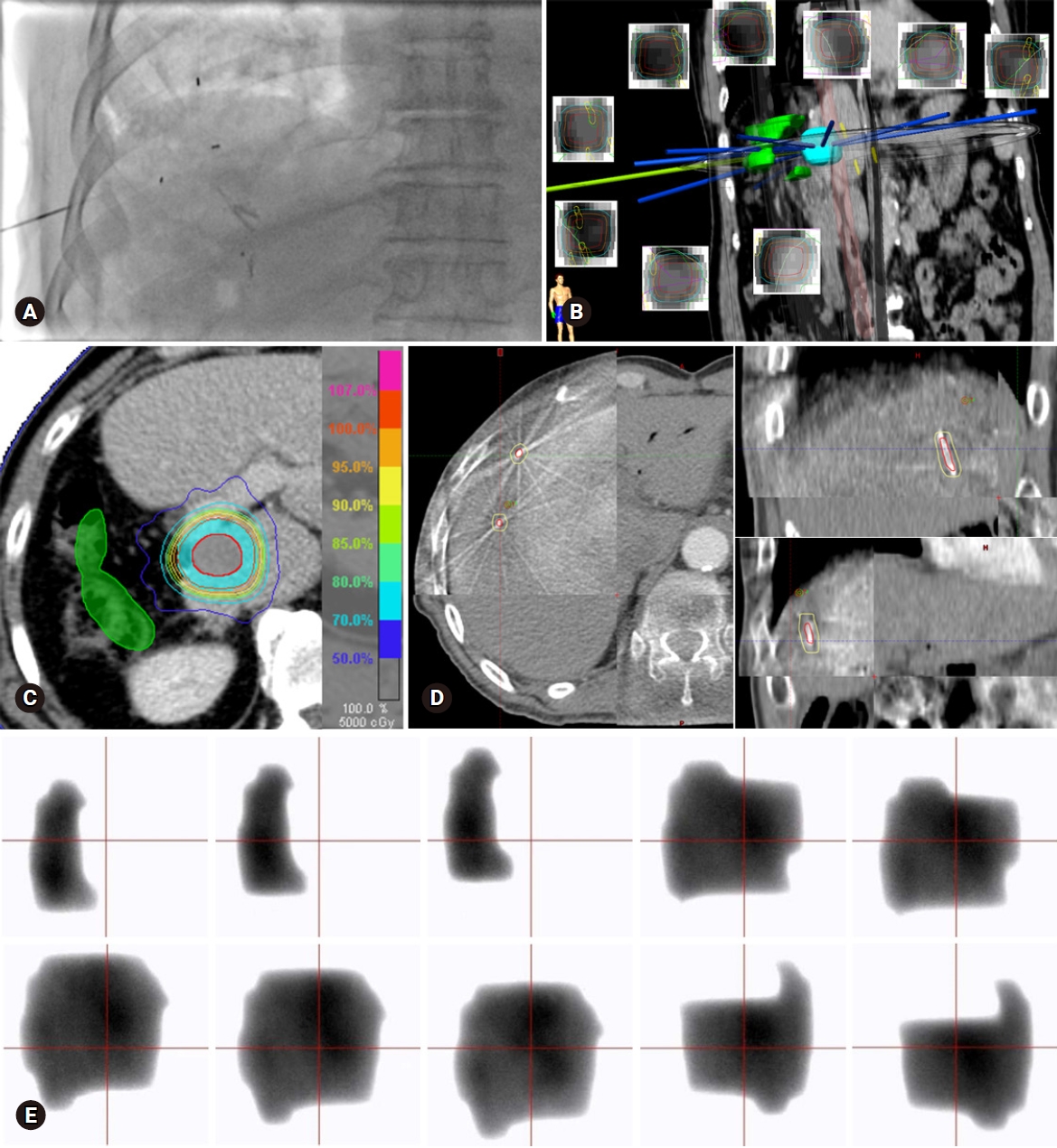
- 8,522 View
- 133 Download
- 4 Crossref
-
 Abstract
Abstract
 PDF
PDF - Stereotactic body radiotherapy (SBRT) is an advanced form of radiotherapy (RT) with a growing interest on its application in the treatment of hepatocellular carcinoma (HCC). It can deliver ablative radiation doses to tumors in a few fractions without excessive doses to normal tissues, with the help of advanced modern RT and imaging technologies. Currently, SBRT is recommended as an alternative to curative treatments, such as surgery and radiofrequency ablation. This review discusses the current status of SBRT to aid in the decision making on how it is incorporated into the HCC management.
-
Citations
Citations to this article as recorded by- Dosimetric Comparison Study Between Free Breathing and Breath Hold Techniques in Patients Treated by Liver-Directed Stereotactic Body Radiation Therapy
Atsuto Katano, Tomoyuki Noyama, Kosuke Morishima, Yuki Nozawa, Hideomi Yamashita
Cureus.2023;[Epub] CrossRef - The role of stereotactic body radiotherapy (SBRT) in the treatment of recurrent / progressive lung lesions after primary treatment
H. Demir, S. Özdemir, N. Işık, G. Yaprak
International Journal of Radiation Research.2023; 21(4): 727. CrossRef - MRI features of treated hepatocellular carcinoma following locoregional therapy: a pictorial review
Mohanned Alnammi, Jeremy Wortman, Jaclyn Therrien, Jalil Afnan
Abdominal Radiology.2022; 47(7): 2299. CrossRef - Radiofrequency ablation versus laparoscopic hepatectomy for treatment of hepatocellular carcinoma: a systematic review and meta-analysis
Shan Jin, Shisheng Tan, Wen Peng, Ying Jiang, Chunshan Luo
World Journal of Surgical Oncology.2020;[Epub] CrossRef
- Dosimetric Comparison Study Between Free Breathing and Breath Hold Techniques in Patients Treated by Liver-Directed Stereotactic Body Radiation Therapy
- Prepectoral breast reconstruction
- Sung-Eun Kim
- Yeungnam Univ J Med. 2019;36(3):201-207. Published online August 26, 2019
- DOI: https://doi.org/10.12701/yujm.2019.00283

- 9,423 View
- 129 Download
- 17 Crossref
-
 Abstract
Abstract
 PDF
PDF - Implant-based breast reconstruction is the most commonly used reconstruction technique after mastectomy. This is because skin-sparing mastectomy has become possible with advancements in oncology. In addition, the development of breast implants and the advent of acellular dermal matrices have reduced postoperative complications and resulted in superior cosmetic results. The most frequently performed surgical breast reconstruction procedure for the past 20 years was the insertion of an implant under the pectoralis major muscle by means of the dual plane approach. However, some patients suffered from pain and animation deformity caused by muscle manipulation. Recently, a prepectoral approach has been used to solve the above problems in select patients, and the results are similar to subpectoral results. However, this technique is not always chosen due to the number of considerations for successful surgery. In this article, we will discuss the emergence of prepectoral breast reconstruction, indications and contraindications, surgical procedures, and outcomes.
-
Citations
Citations to this article as recorded by- The current use of tissue expanders in breast reconstruction: device design, features, and technical considerations
Min-Jeong Cho, Rana V. Farhadi, David W. Nash, Joseph Kaleeny, Stephen P. Povoski, Albert H. Chao
Expert Review of Medical Devices.2024; 21(1-2): 27. CrossRef - The Effect of Early Cultures and Dual-port Expanders on Two-stage, Prepectoral Breast Reconstruction: The 25/25 Study
Hunter R. Moyer, Kayla M. Sisson
Plastic and Reconstructive Surgery - Global Open.2024; 12(1): e5507. CrossRef - Current Global Trends in Prepectoral Breast Reconstruction
Saima Taj, Ravi Chandavarkar, Raghavan Vidya
Medicina.2024; 60(3): 431. CrossRef - Mastectomy with one-stage or two-stage reconstruction in breast cancer: analysis of early outcomes and patient’s satisfaction
Angela Gurrado, Alessandro Pasculli, Alessia Toma, Michele Maruccia, Rossella Elia, Marco Moschetta, Michele Telegrafo, Giuseppe Massimiliano De Luca, Walter Lavermicocca, Elisabetta Poli, Francesco Paolo Prete, Lucia Ilaria Sgaramella, Giuseppe Giudice,
Updates in Surgery.2023; 75(1): 235. CrossRef - Immediate prepectoral breast reconstruction using an ADM with smooth round implants: A prospective observational cohort study
Fabio Santanelli di Pompeo, Guido Firmani, Guido Paolini, Vittoria Amorosi, Francesca Briganti, Michail Sorotos
Journal of Plastic, Reconstructive & Aesthetic Surgery.2023; 80: 56. CrossRef - Optimizing Prepectoral Implant Placement and Concomitant Fat Grafting After Tissue Expansion
Alisa O. Girard, Christopher D. Lopez, Christina M. Ambrosino, Kristen P. Broderick
Annals of Plastic Surgery.2023; 90(6S): S483. CrossRef - A Propensity Score–Matched Comparison of Perioperative Outcomes in Prepectoral Smooth Versus Textured Tissue Expander Breast Reconstruction
Kevin Perez, Pope Rodnoi, Sumeet S. Teotia, Nicholas T. Haddock
Annals of Plastic Surgery.2023; 90(5S): S242. CrossRef - Prepectoral Breast Reconstruction and Quality of Life: One Step Further
Michael Kontos
Journal of Investigative Surgery.2022; 35(4): 848. CrossRef - Selective Denervation of Pectoralis Major Muscle Improves Cosmetic Outcome and Quality of Life in Retro-Pectoral Implant Based Breast Reconstruction
Marco Bernini, Silvia Sordi, Niccolo’ Bembi, Icro Meattini, Diego De Benedetto, Jacopo Nori Cucchiari, Lorenzo Livi, Lorenzo Orzalesi
Clinical Breast Cancer.2022; 22(1): 60. CrossRef - Meshed Acellular Dermal Matrix for Two-Staged Prepectoral Breast Reconstruction: An Institutional Experience
Jessica Luo, Rhett N. Willis, Suzanna M. Ohlsen, Meghan Piccinin, Neal Moores, Alvin C. Kwok, Jayant P. Agarwal
Archives of Plastic Surgery.2022; 49(02): 166. CrossRef - Chances and challenges—analysis of trends in breast reconstruction
Siling Yang, Xixi Lin, Maximilian Kückelhaus, Tobias Hirsch, Marie-Luise Klietz, Matthias M. Aitzetmüller
Journal of Plastic, Reconstructive & Aesthetic Surgery.2022; 75(8): 2584. CrossRef - Cost analysis of pre-pectoral implant-based breast reconstruction
Sachin Chinta, Daniel J. Koh, Nikhil Sobti, Kathryn Packowski, Nikki Rosado, William Austen, Rachel B. Jimenez, Michelle Specht, Eric C. Liao
Scientific Reports.2022;[Epub] CrossRef - Awake breast cancer surgery: strategy in the beginning of COVID-19 emergency
Gianluca Vanni, Marco Pellicciaro, Marco Materazzo, Mario Dauri, Rolando Maria D’angelillo, Chiara Buonomo, Adriano De Majo, Chiara Pistolese, Ilaria Portarena, Alessandro Mauriello, Francesca Servadei, Erica Giacobbi, Agostino Chiaravalloti, Oreste Claud
Breast Cancer.2021; 28(1): 137. CrossRef - Next-generation surgical meshes for drug delivery and tissue engineering applications: materials, design and emerging manufacturing technologies
Francesca Corduas, Dimitrios A. Lamprou, Elena Mancuso
Bio-Design and Manufacturing.2021; 4(2): 278. CrossRef - Examining the Effects of Postmastectomy Radiation Therapy in Prepectoral Versus Subpectoral Autologous Breast Reconstruction
Ashraf A. Patel, Connor P. Arquette, Pooja S. Yesantharao, Mimi R. Borrelli, Kristen P. Broderick, Jennifer E. Cheesborough, Gordon K. Lee, Rahim S. Nazerali
Annals of Plastic Surgery.2021; 86(5S): S390. CrossRef - Day-case approach to immediate breast reconstruction: pushing the boundaries of ambulatory breast surgery in the post-COVID-19 era
H Shaker, NAR Leena, V Mayers, F Koussa, A Deshpande
The Annals of The Royal College of Surgeons of England.2021; 103(6): 426. CrossRef - Meta-analysis of prepectoral implant-based breast reconstruction: guide to patient selection and current outcomes
Olivia Abbate, Nikki Rosado, Nikhil Sobti, Brittany L. Vieira, Eric C. Liao
Breast Cancer Research and Treatment.2020; 182(3): 543. CrossRef
- The current use of tissue expanders in breast reconstruction: device design, features, and technical considerations
Original articles
- Feasibility and efficacy of coil embolization for middle cerebral artery aneurysms
- Jae Young Choi, Chang Hwa Choi, Jun Kyeung Ko, Jae Il Lee, Chae Wook Huh, Tae Hong Lee
- Yeungnam Univ J Med. 2019;36(3):208-218. Published online April 25, 2019
- DOI: https://doi.org/10.12701/yujm.2019.00192

- 7,115 View
- 91 Download
- 2 Crossref
-
 Abstract
Abstract
 PDF
PDF - Background
The anatomy of middle cerebral artery (MCA) aneurysms has been noted to be unfavorable for endovascular treatment. The purpose of this study was to assess the feasibility and efficacy of coiling for MCA aneurysms.
Methods
From January 2004 to December 2015, 72 MCA aneurysms (38 unruptured and 34 ruptured) in 67 patients were treated with coils. Treatment-related complications, clinical outcomes, and immediate and follow-up angiographic outcomes were retrospectively analyzed.
Results
Aneurysms were located at the MCA bifurcation (n=60), 1st segment (M1, n=8), and 2nd segment (M2, n=4). Sixty-nine aneurysms (95.8%) were treated by neck remodeling techniques using multi-catheter (n=44), balloon (n=14), stent (n=8), or combination of these (n=3). Only three aneurysms were treated by single-catheter technique. Angiographic results were 66 (91.7%) complete, five (6.9%) remnant neck, and one (1.4%) incomplete occlusion. Procedural complications included aneurysm rupture (n=1), asymptomatic coil migration to the distal vessel (n=1), and acute thromboembolism (n=10) consisting of eight asymptomatic and two symptomatic events. Treatment-related permanent morbidity and mortality rates were 4.5% and 3.0%, respectively. There was no bleeding on clinical follow-up (mean, 29 months; range, 6-108 months). Follow-up angiographic results (mean, 26 months; range, 6-96 months) in patients included one major and three minor recanalizations.
Conclusion
Coiling of MCA aneurysms could be a technically feasible and clinically effective treatment strategy with acceptable angiographic and clinical outcomes. However, the safety and efficacy of this technique as compared to surgical clipping remains to be ascertained. -
Citations
Citations to this article as recorded by- Adverse events during endovascular treatment of ruptured aneurysms: A prospective nationwide study on subarachnoid hemorrhage in Sweden
Bryndís Baldvinsdóttir, Paula Klurfan, Johanna Eneling, Elisabeth Ronne-Engström, Per Enblad, Peter Lindvall, Helena Aineskog, Steen Friðriksson, Mikael Svensson, Peter Alpkvist, Jan Hillman, Erik Kronvall, Ola G. Nilsson
Brain and Spine.2023; 3: 102708. CrossRef - Microsurgical Clipping versus Advanced Endovascular Treatment of Unruptured Middle Cerebral Artery Bifurcation Aneurysms After a “Coil-First” Policy
Muriel Pflaeging, Christoph Kabbasch, Marc Schlamann, Lenhard Pennig, Stephanie Theresa Juenger, Jan-Peter Grunz, Marco Timmer, Gerrit Brinker, Roland Goldbrunner, Boris Krischek, Lukas Goertz
World Neurosurgery.2021; 149: e336. CrossRef
- Adverse events during endovascular treatment of ruptured aneurysms: A prospective nationwide study on subarachnoid hemorrhage in Sweden
- Factors that determine the Work Ability Index of street cleaners
- Jung Won Kim, Seonhee Yang, Insung Chung, Mi-Young Lee
- Yeungnam Univ J Med. 2019;36(3):219-224. Published online May 9, 2019
- DOI: https://doi.org/10.12701/yujm.2019.00199

- 7,134 View
- 95 Download
- 3 Crossref
-
 Abstract
Abstract
 PDF
PDF - Background
Korea has shown a rapid pace of aging and has become an aged society in a shorter period than Western countries. Therefore, it is important that middle-aged workers maintain their ability to work in the industrial field at the maximum level while maintaining their health. The purpose of this study was to analyze the factors affecting work ability and to use this data to maintain the working ability of middle-aged workers in the future.
Methods
From 2015 to 2017, we surveyed 371 street cleaners who visited a health center for health promotion in a metropolitan city. The relationship between the general characteristics of the survey subjects and the Work Ability Index (WAI) was confirmed by a univariate analysis. Statistically significant (p<0.2) factors were selected and a multiple linear regression analysis was conducted with WAI scores as a dependent variable.
Results
Age, body mass index, body fat percentage, the Alcohol Use Disorders Identification Test-Korea (AUDIT-K) scores, the Psychosocial Well-Being Index-Short Form (PWI-SF) scores, maximal oxygen consumption (VO2max), and hypertension showed statistically significant correlations with the WAI in the univariate analysis. In the multivariate analysis, the VO2max, AUDIT-K scores, and PWI-SF scores were included in the regression equation. VO2max had the greatest effect on the standardization coefficient indicating the relative contribution of independent variables, followed by the AUDIT-K scores and the PWI-SF scores.
Conclusion
Programs to increase workers’ physical work ability and alleviate psychosocial stress and drinking habits should be developed and implemented in the future. -
Citations
Citations to this article as recorded by- The Work Ability Index (WAI) in the Healthcare Sector: A Cross-Sectional/Retrospective Assessment of the Questionnaire
Nicola Magnavita, Igor Meraglia, Giacomo Viti, Lorenzo Borghese
International Journal of Environmental Research and Public Health.2024; 21(3): 349. CrossRef - Magnitude and possible risk factors of musculoskeletal disorders among street cleaners and solid waste workers: a cross-sectional study
Melkamu Alie, Yohannes Abich, Solomon Fasika Demissie, Fkrte Kebede Weldetsadik, Tesfa Kassa, Kassaw Belay Shiferaw, Balamurugan Janakiraman, Yohannes Awoke Assefa
BMC Musculoskeletal Disorders.2023;[Epub] CrossRef - Psychometric Properties of the Work Ability Index in Health Centre Workers in Spain
Inmaculada Mateo Rodríguez, Emily Caitlin Lily Knox, Coral Oliver Hernández, Antonio Daponte Codina
International Journal of Environmental Research and Public Health.2021; 18(24): 12988. CrossRef
- The Work Ability Index (WAI) in the Healthcare Sector: A Cross-Sectional/Retrospective Assessment of the Questionnaire
- Computer-based clinical coding activity analysis for neurosurgical terms
- Jong Hyuk Lee, Jung Hwan Lee, Wooseok Ryu, Byung Kwan Choi, In Ho Han, Chang Min Lee
- Yeungnam Univ J Med. 2019;36(3):225-230. Published online June 4, 2019
- DOI: https://doi.org/10.12701/yujm.2019.00220

- 5,411 View
- 53 Download
-
 Abstract
Abstract
 PDF
PDF - Background
It is not possible to measure how much activity is required to understand and code a medical data. We introduce an assessment method in clinical coding, and applied this method to neurosurgical terms.
Methods
Coding activity consists of two stages. At first, the coders need to understand a presented medical term (informational activity). The second coding stage is about a navigating terminology browser to find a code that matches the concept (code-matching activity). Systematized Nomenclature of Medicine – Clinical Terms (SNOMED CT) was used for the coding system. A new computer application to record the trajectory of the computer mouse and record the usage time was programmed. Using this application, we measured the time that was spent. A senior neurosurgeon who has studied SNOMED CT has analyzed the accuracy of the input coding. This method was tested by five neurosurgical residents (NSRs) and five medical record administrators (MRAs), and 20 neurosurgical terms were used.
Results
The mean accuracy of the NSR group was 89.33%, and the mean accuracy of the MRA group was 80% (p=0.024). The mean duration for total coding of the NSR group was 158.47 seconds, and the mean duration for total coding of the MRA group was 271.75 seconds (p=0.003).
Conclusion
We proposed a method to analyze the clinical coding process. Through this method, it was possible to accurately calculate the time required for the coding. In neurosurgical terms, NSRs had shorter time to complete the coding and higher accuracy than MRAs.
- Assessment of solid components of borderline ovarian tumor and stage I carcinoma: added value of combined diffusion- and perfusion-weighted magnetic resonance imaging
- See Hyung Kim
- Yeungnam Univ J Med. 2019;36(3):231-240. Published online June 13, 2019
- DOI: https://doi.org/10.12701/yujm.2019.00234
- Correction in: J Yeungnam Med Sci 2020;37(2):147
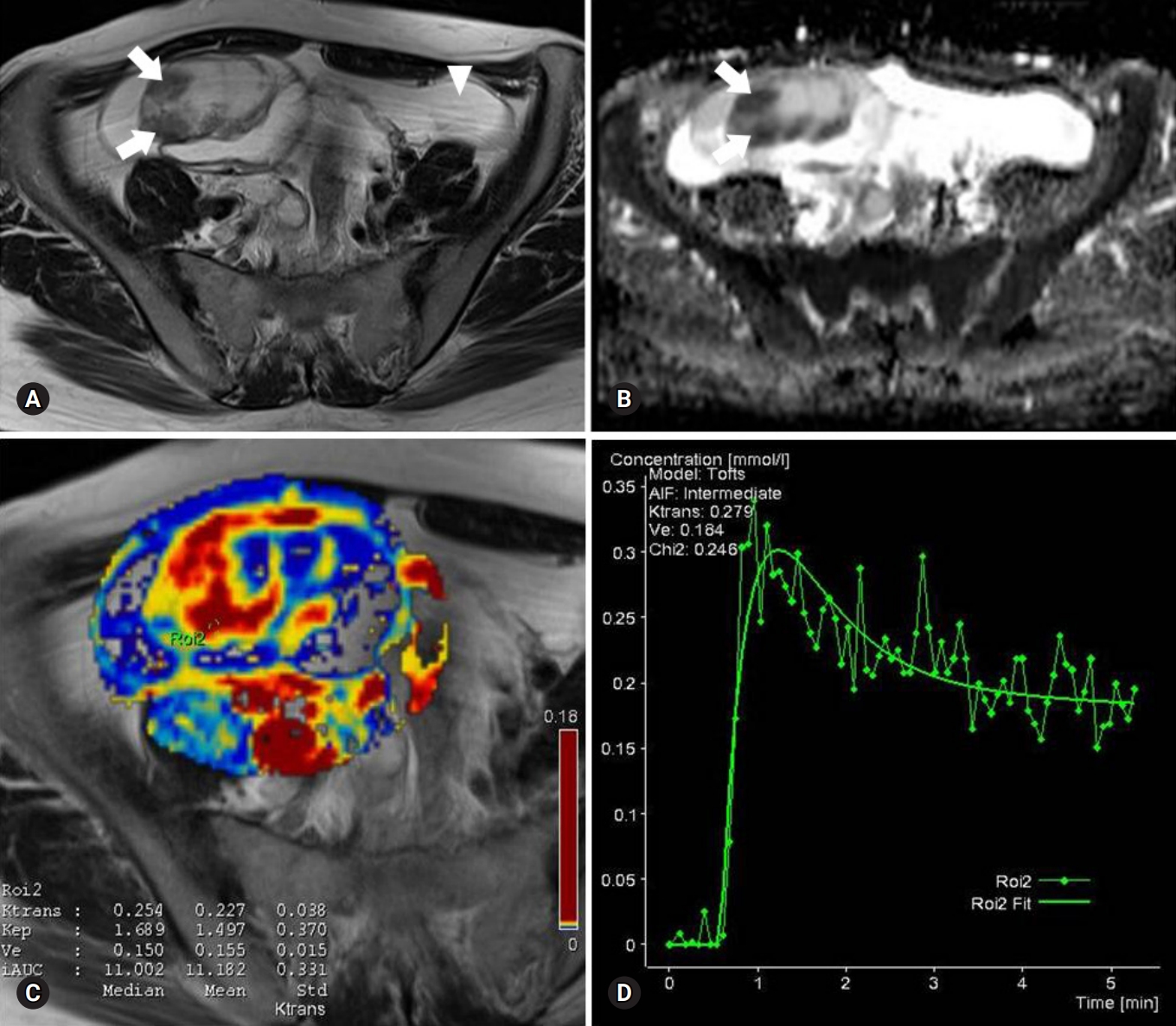
- 8,218 View
- 83 Download
- 3 Crossref
-
 Abstract
Abstract
 PDF
PDF - Background
We sought to determine the value of combining diffusion-weighted (DW) and perfusion-weighted (PW) sequences with a conventional magnetic resonance (MR) sequence to assess solid components of borderline ovarian tumors (BOTs) and stage I carcinomas.
Methods
Conventional, DW, and PW sequences in the tumor imaging studies of 70 patients (BOTs, n=38; stage I carcinomas, n=32) who underwent surgery with pathologic correlation were assessed. Two independent radiologists calculated the parameters apparent diffusion coefficient (ADC), Ktrans (vessel permeability), and Ve (cell density) for the solid components. The distribution on conventional MR sequence and mean, standard deviation, and 95% confidence interval of each DW and PW parameter were calculated. The inter-observer agreement among the two radiologists was assessed. Area under the receiver operating characteristic curve (AUC) and multivariate logistic regression were performed to compare the effectiveness of DW and PW sequences for average values and to characterize the diagnostic performance of combined DW and PW sequences.
Results
There were excellent agreements for DW and PW parameters between radiologists. The distributions of ADC, Ktrans and Ve values were significantly different between BOTs and stage I carcinomas, yielding AUCs of 0.58 and 0.68, 0.78 and 0.82, and 0.70 and 0.72, respectively, with ADC yielding the lowest diagnostic performance. The AUCs of the DW, PW, and combined PW and DW sequences were 0.71±0.05, 0.80±0.05, and 0.85±0.05, respectively.
Conclusion
Combining PW and DW sequences to a conventional sequence potentially improves the diagnostic accuracy in the differentiation of BOTs and stage I carcinomas. -
Citations
Citations to this article as recorded by- Advances in fertility preserving surgery for borderline ovarian tumors
Mingdan Wang, Kuiran Liu
European Journal of Obstetrics & Gynecology and Reproductive Biology.2022; 270: 206. CrossRef - Recurrence characteristics and clinicopathological results of borderline ovarian tumors
Lina Niu, Huihui Tian, Yongjun Xu, Jieqiong Cao, Xu Zhang, Junli Zhang, Jiajia Hou, Weiqin Lv, Junxia Wang, Li Xin, XuFeng Dong, Tao Xu, Yuan Nan, Hua Wei, Xinting Chai, Na Li, Yan Ni, Yun Shang, Lizhen Zhang, Ye Zhao
BMC Women's Health.2021;[Epub] CrossRef - Erratum to “Assessment of solid components of borderline ovarian tumor and stage I carcinoma: added value of combined diffusion- and perfusion-weighted magnetic resonance imaging”
See Hyung Kim
Yeungnam University Journal of Medicine.2020; 37(2): 147. CrossRef
- Advances in fertility preserving surgery for borderline ovarian tumors
- Determining the correlation between outdoor heatstroke incidence and climate elements in Daegu metropolitan city
- Jung Ho Kim, Hyun Wook Ryoo, Sungbae Moon, Tae Chang Jang, Sang Chan Jin, You Ho Mun, Byung Soo Do, Sam Beom Lee, Jong-yeon Kim
- Yeungnam Univ J Med. 2019;36(3):241-248. Published online July 2, 2019
- DOI: https://doi.org/10.12701/yujm.2019.00248
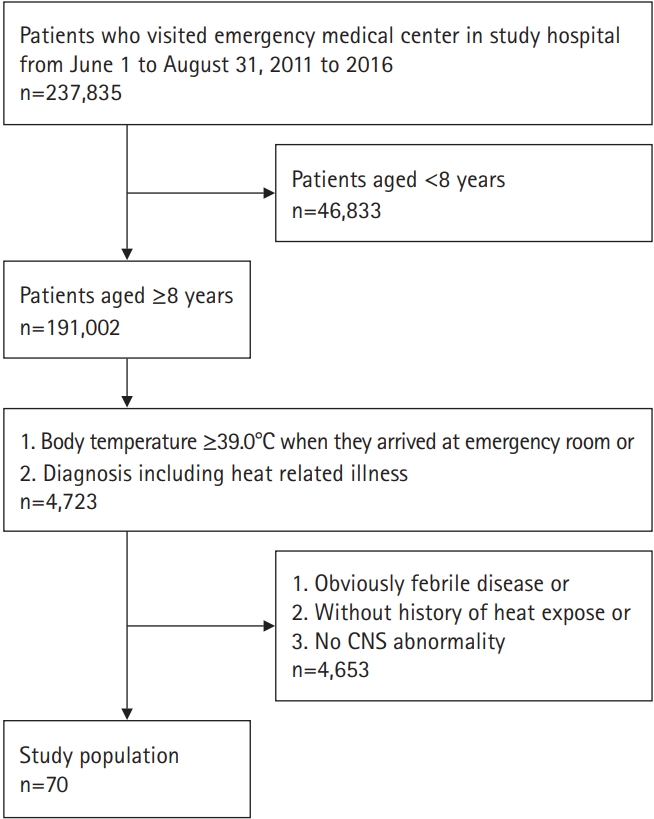
- 6,420 View
- 79 Download
- 1 Crossref
-
 Abstract
Abstract
 PDF
PDF - Background
Heatstroke is one of the most serious heat-related illnesses. However, establishing public policies to prevent heatstroke remains a challenge. This study aimed to investigate the most relevant climate elements and their warning criteria to prevent outdoor heatstroke (OHS).
Methods
We investigated heatstroke patients from five major hospitals in Daegu metropolitan city, Korea, from June 1 to August 31, 2011 to 2016. We also collected the corresponding regional climate data from Korea Meteorological Administration. We analyzed the relationship between the climate elements and OHS occurrence by logistic regression.
Results
Of 70 patients who had heatstroke, 45 (64.3%) experienced it while outdoors. Considering all climate elements, only mean heat index (MHI) was related with OHS occurrence (p=0.019). Therefore, the higher the MHI, the higher the risk for OHS (adjusted odds ratio, 1.824; 95% confidence interval, 1.102–3.017). The most suitable cutoff point for MHI by Youden’s index was 30.0°C (sensitivity, 77.4%; specificity, 73.7%).
Conclusion
Among the climate elements, MHI was significantly associated with OHS occurrence. The optimal MHI cutoff point for OHS prevention was 30.0°C. -
Citations
Citations to this article as recorded by- Ambient heat exposure and kidney function in patients with chronic kidney disease: a post-hoc analysis of the DAPA-CKD trial
Zhiyan Zhang, Hiddo J L Heerspink, Glenn M Chertow, Ricardo Correa-Rotter, Antonio Gasparrini, Niels Jongs, Anna Maria Langkilde, John J V McMurray, Malcolm N Mistry, Peter Rossing, Robert D Toto, Priya Vart, Dorothea Nitsch, David C Wheeler, Ben Caplin
The Lancet Planetary Health.2024; 8(4): e225. CrossRef
- Ambient heat exposure and kidney function in patients with chronic kidney disease: a post-hoc analysis of the DAPA-CKD trial
Case reports
- Apathy syndrome in a patient previously treated with selective serotonin reuptake inhibitors for depression
- Hye-Geum Kim, Bon-Hoon Koo, Seung Woo Lee, Eun-Jin Cheon
- Yeungnam Univ J Med. 2019;36(3):249-253. Published online March 15, 2019
- DOI: https://doi.org/10.12701/yujm.2019.00150
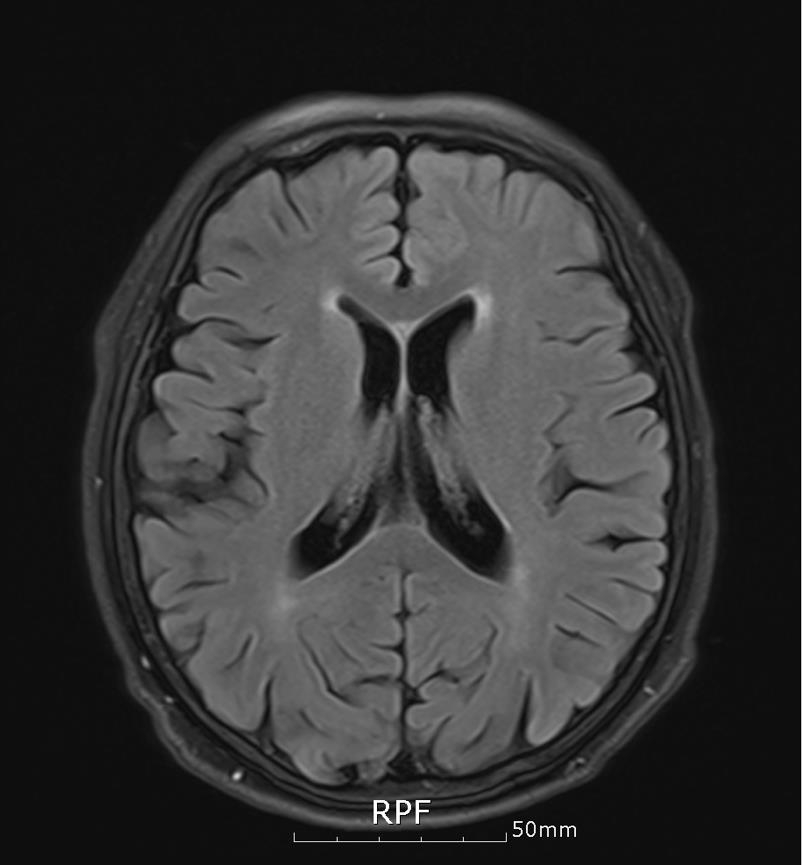
- 13,465 View
- 164 Download
- 3 Crossref
-
 Abstract
Abstract
 PDF
PDF - There is considerable overlap in the clinical presentations of apathy and depression. However, differential diagnosis between apathy and other psychiatric conditions, including depression and dementia, is important. In this report, we present the case of a 67-year-old woman with a history of receiving selective serotonin reuptake inhibitor (SSRI) treatment for depression. Differential diagnosis between treatment-resistant depression and SSRI-induced apathy syndrome was required. The symptoms of her apathy syndrome were relieved after the discontinuation of SSRIs and the addition of olanzapine, methylphenidate, and modafinil. Furthermore, we briefly review related literature in this article.
-
Citations
Citations to this article as recorded by- Apathy associated with antidepressant drugs: a systematic review
Vasilios G. Masdrakis, Manolis Markianos, David S. Baldwin
Acta Neuropsychiatrica.2023; 35(4): 189. CrossRef - Can antidepressant use be associated with emotional blunting in a subset of patients with depression? A scoping review of available literature
Muhammad Youshay Jawad, Maurish Fatima, Umer Hassan, Zaofashan Zaheer, Muhammad Ayyan, Muhammad Ehsan, Muhmmad Huzaifa Ahmed Khan, Ahsan Qadeer, Abdul Rehman Gull, Muhammad Talha Asif, Mujeeb U. Shad
Human Psychopharmacology: Clinical and Experimental.2023;[Epub] CrossRef - Investigation of the efficiency of various antidepressant replacement regimens in the development of SSRI-induced apathy syndrome
V. E. Medvedev, R. A. Kardashyan, V. I. Frolova, A. M. Burno, S. V. Nekrasova, V. I. Salyntsev
Neurology, Neuropsychiatry, Psychosomatics.2020; 12(2): 48. CrossRef
- Apathy associated with antidepressant drugs: a systematic review
- Catastrophic catecholamine-induced cardiomyopathy rescued by extracorporeal membrane oxygenation in recurrent malignant pheochromocytoma
- Daniel Min
- Yeungnam Univ J Med. 2019;36(3):254-259. Published online May 22, 2019
- DOI: https://doi.org/10.12701/yujm.2019.00213
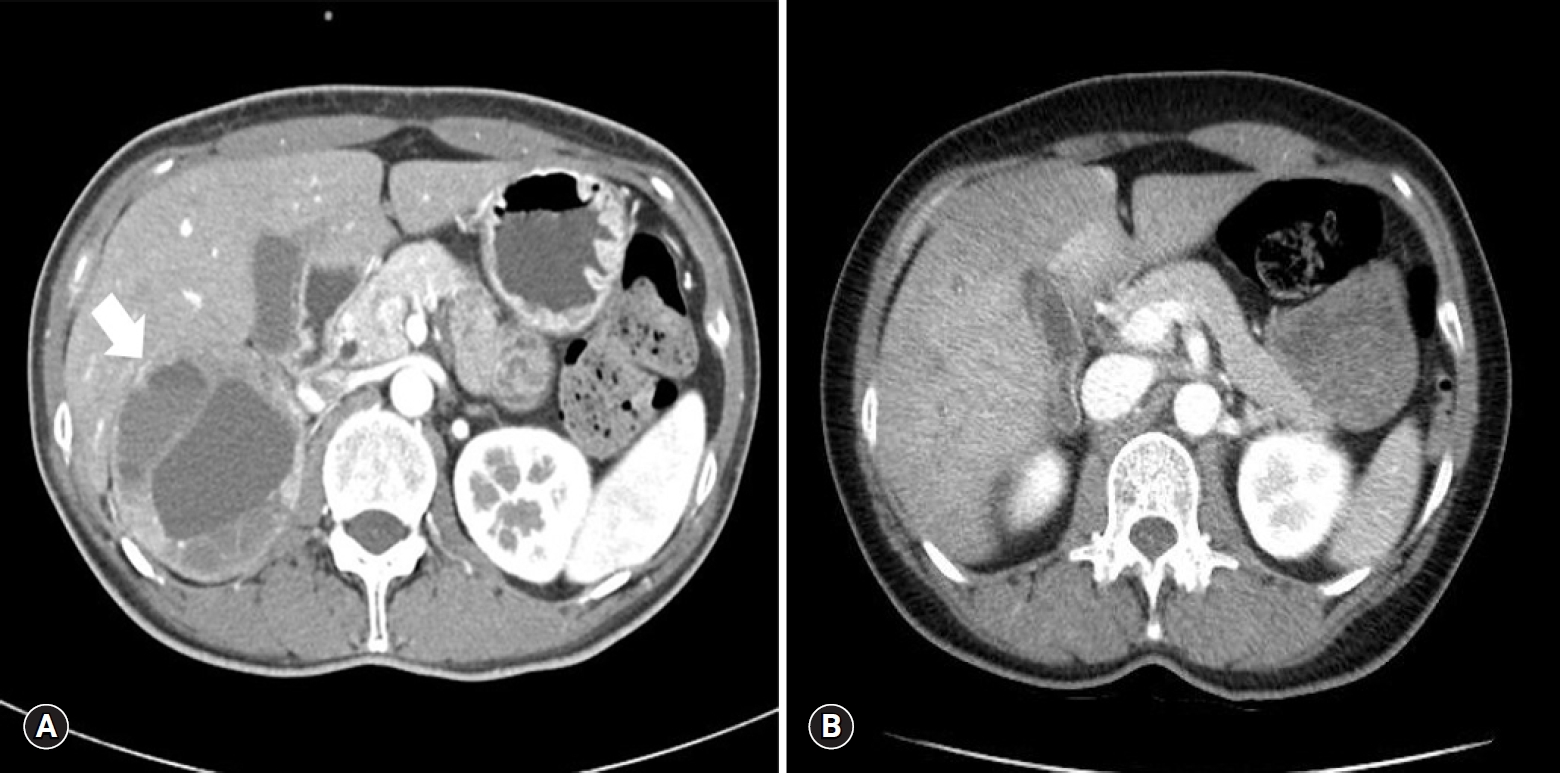
- 5,557 View
- 57 Download
- 2 Crossref
-
 Abstract
Abstract
 PDF
PDF - Pheochromocytoma (PCC) is a rare catecholamine-producing tumor with the incidence in hypertension of 0.1-0.6%. PCC crisis is an endocrine emergency that can lead to hemodynamic disturbance and organ failure such as catecholamine-induced cardiomyopathy. The circulatory collapse caused by it often requires mechanical support. The author reports an unusual case in which a patient who previously underwent surgery for malignant PCC developed catecholamine-induced cardiomyopathy, and successfully recovered using extracorporeal membrane oxygenation.
-
Citations
Citations to this article as recorded by- Successful Use of Extracorporeal Life Support and Continuous Renal Replacement Therapy in the Treatment of Cardiogenic Shock Induced by Tumor Lysis Syndrome in a Pediatric Patient With Lymphoma: A Case Report
Zhulin Wang, Fang Zhang, Long Xiang, Yinyu Yang, Wei Wang, Biru Li, Hong Ren
Frontiers in Medicine.2022;[Epub] CrossRef - Clinical characteristics and outcomes of pheochromocytoma crisis: a literature review of 200 cases
Y. Ando, Y. Ono, A. Sano, N. Fujita, S. Ono, Y. Tanaka
Journal of Endocrinological Investigation.2022; 45(12): 2313. CrossRef
- Successful Use of Extracorporeal Life Support and Continuous Renal Replacement Therapy in the Treatment of Cardiogenic Shock Induced by Tumor Lysis Syndrome in a Pediatric Patient With Lymphoma: A Case Report
- Late complication of the Nuss procedure: recurrent cardiac tamponade
- Won Jong Park, Jang Won Son, Kyu Hwan Park, You Min Kim, Jong Ho Nam, Kang Un Choi, Jung Ho Kim
- Yeungnam Univ J Med. 2019;36(3):260-264. Published online June 13, 2019
- DOI: https://doi.org/10.12701/yujm.2019.00241
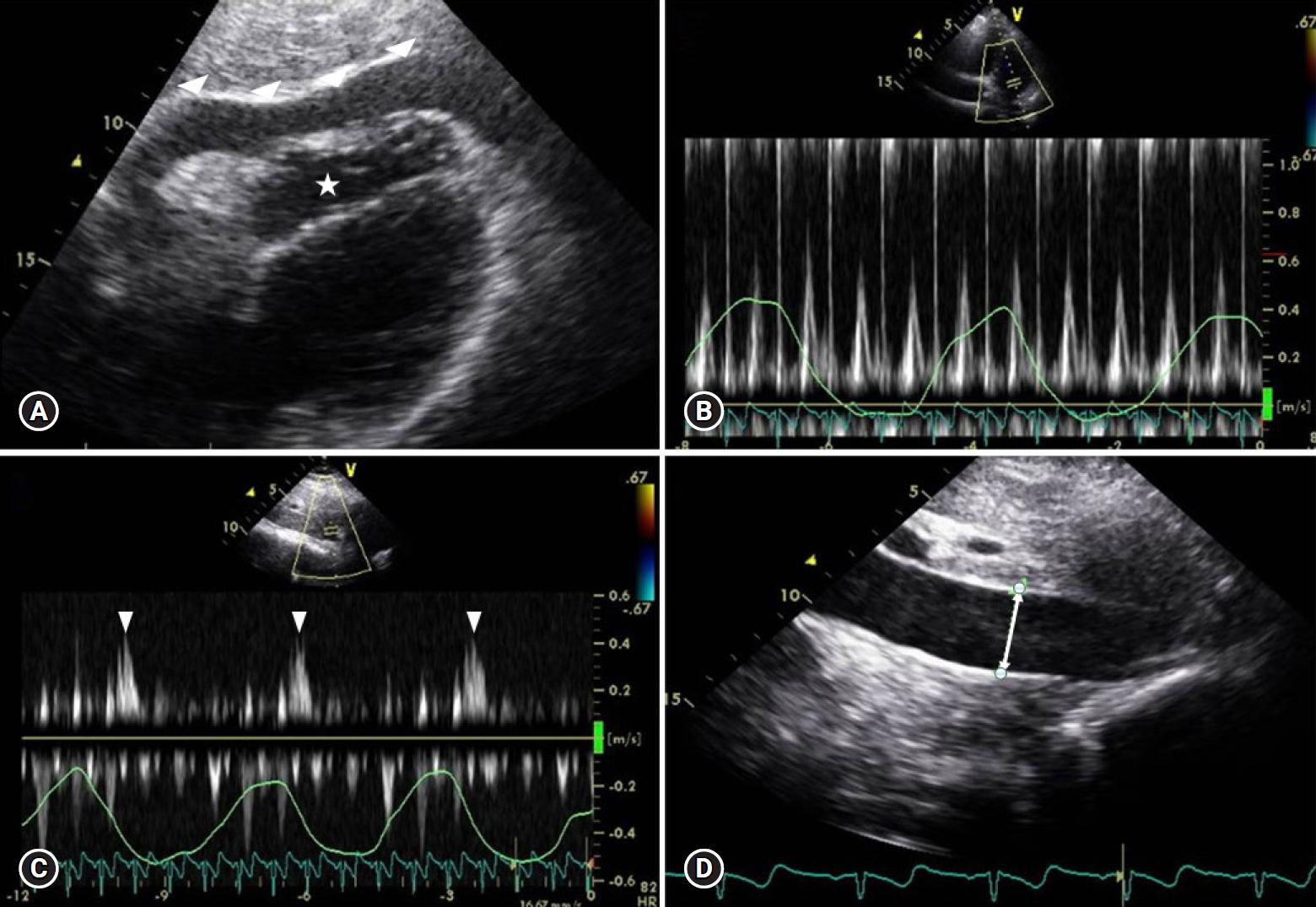
- 6,317 View
- 68 Download
-
 Abstract
Abstract
 PDF
PDF - Pectus excavatum (PE) is known as one of the most common congenital deformities of the anterior chest wall. The Nuss procedure is an effective surgical therapy to correct PE. Here, we report a case of recurrent cardiac tamponade due to hemopericardium that occurred after 16 months following the Nuss procedure. The cause of recurrent hemopericardium was thought to be local, repetitive irritation of the pericardium by the Nuss steel bar. We should keep in mind that this serious complication can occur after the Nuss procedure, even in the late phase.
- Incidentally found cystic lymphangioma of the adrenal gland in an elderly male cadaver
- Hee Cheol Kim, Yunji Kang, Young Hee Maeng, Jinu Kim, Sang-Pil Yoon
- Yeungnam Univ J Med. 2019;36(3):265-268. Published online July 16, 2019
- DOI: https://doi.org/10.12701/yujm.2019.00262
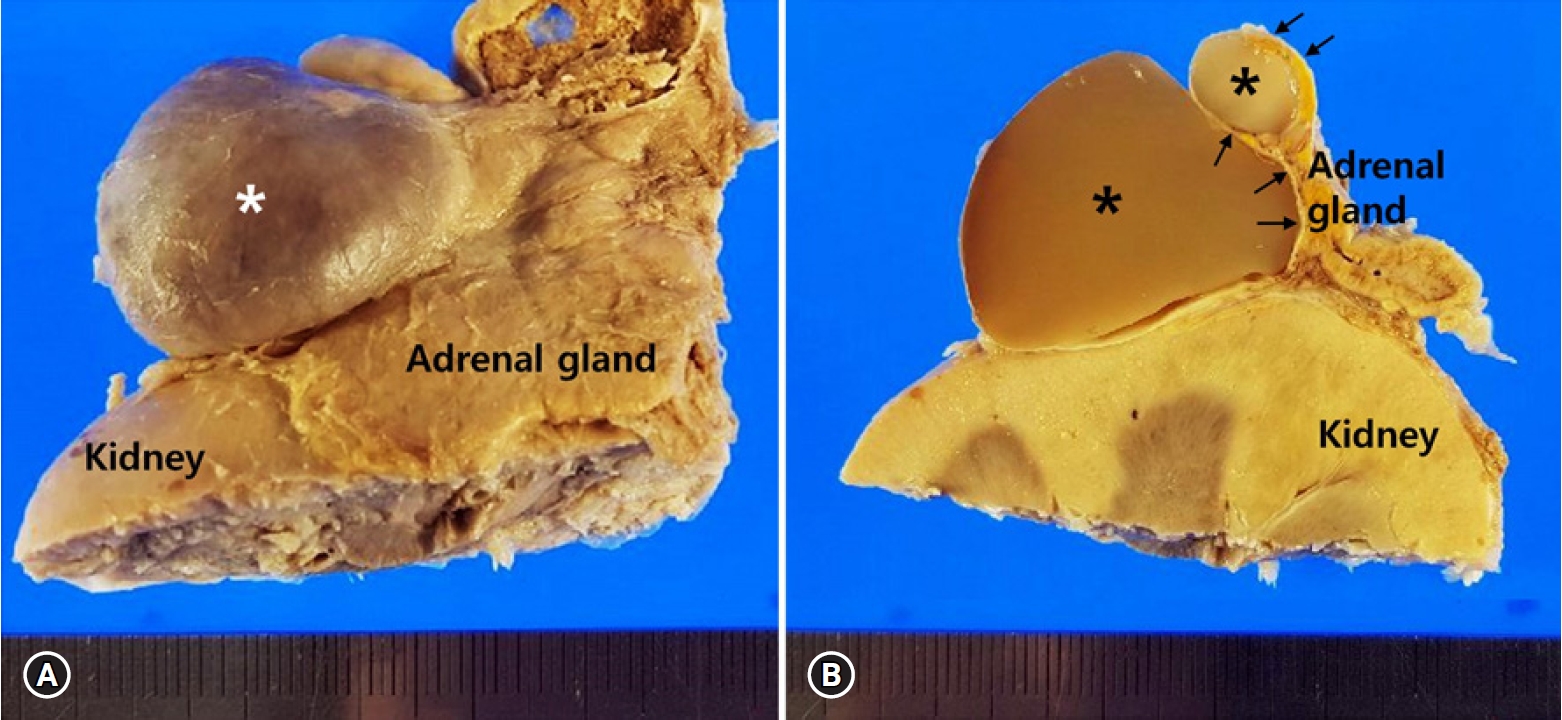
- 5,562 View
- 63 Download
-
 Abstract
Abstract
 PDF
PDF - Adrenal cystic lymphangiomas are extremely rare entities that are often identified incidentally, with less than 60 cases reported to date. We found a protruding ovoid mass consisting of a multiloculated cystic lesion within right adrenal gland in the cadaver of a 75-year-old Korean man. The epithelial cells lining the adrenal cyst were diffusely positive for cluster of differentiation 31 and podoplanin, and negative for pan-cytokeratin. The histopathological diagnosis confirmed a cystic lymphangioma arising from the adrenal gland. Post-mortem findings of the present case are discussed based on the clinicopathological features of adrenal cystic lymphangiomas.
- Isolated hemorrhage in the cerebellar vermis with vertigo and body lateropulsion to the contralesional side
- Dong Hyun Lee, Se-Jin Lee
- Yeungnam Univ J Med. 2019;36(3):269-272. Published online September 9, 2019
- DOI: https://doi.org/10.12701/yujm.2019.00318
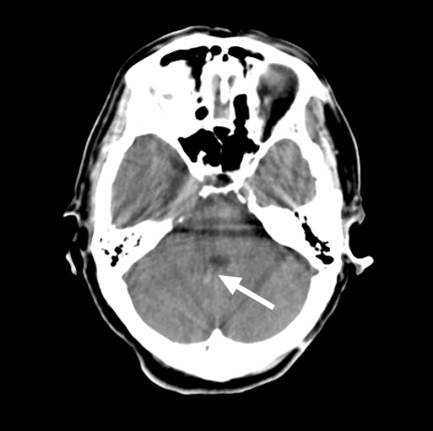
- 5,607 View
- 91 Download
-
 Abstract
Abstract
 PDF
PDF - There have been several reports of patients with isolated lesions of the cerebellar vermis presenting with clinical features similar to those of peripheral vestibulopathy. We report a case of small, isolated hematoma in the cerebellar vermis in a patient who presented with vertigo, ipsilesional nystagmus, and body lateropulsion to the contralesional side without the usual signs or symptoms of cerebellar dysfunction. Although they present with symptoms that mimic those of peripheral vestibulopathy, and brain computed tomography shows no abnormality, as there may be a small, isolated hematoma or infarction in the cerebellar vermis. Thus, brain magnetic resonance imaging should be performed in elderly patients with vascular risk factors.
- Massive cerebral venous sinus thrombosis secondary to Graves' disease
- Hye-Min Son
- Yeungnam Univ J Med. 2019;36(3):273-280. Published online September 18, 2019
- DOI: https://doi.org/10.12701/yujm.2019.00339
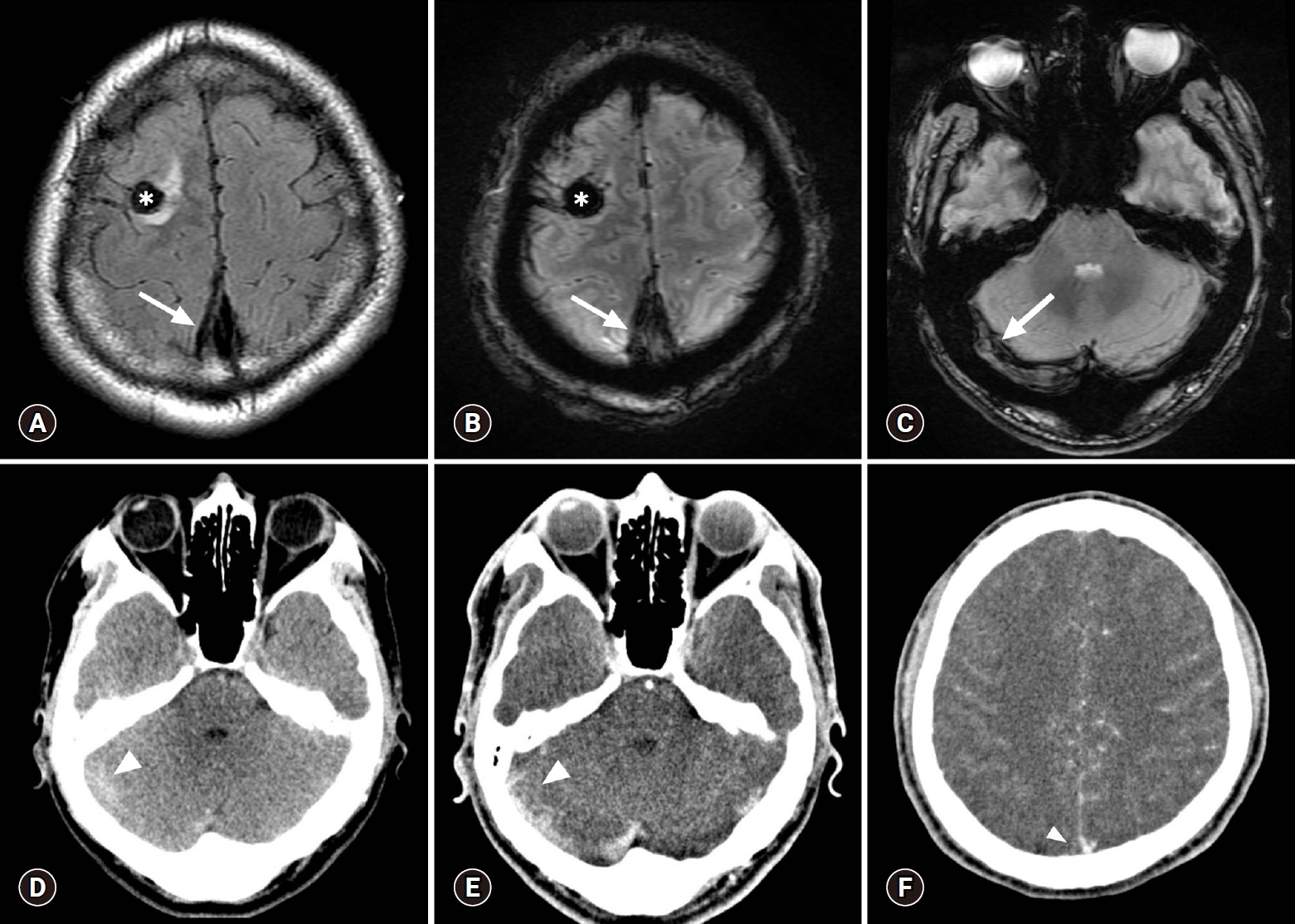
- 5,721 View
- 87 Download
- 8 Crossref
-
 Abstract
Abstract
 PDF
PDF - Cerebral venous sinus thrombosis (CVT) is a rare cerebrovascular condition accounting for 0.5–1% of all types of strokes in the general population. Hyperthyroidism is associated with procoagulant and antifibrinolytic activity, thereby precipitating a hypercoagulable state that predisposes to CVT. We report the case of a 31-year-old Korean man with massive CVT and diagnosis of concomitant Graves’ disease at admission. Early diagnosis and prompt treatment of CVT are important to improve prognosis; therefore, CVT should be considered in the differential diagnosis in all patients with hyperthyroidism presenting with neurological symptoms.
-
Citations
Citations to this article as recorded by- Hyperthyroidism-induced Cerebral Venous Thrombosis Presenting as Chronic Isolated Intracranial Hypertension
Takumi Tashiro, Yuichi Kira, Norihisa Maeda
Internal Medicine.2023; 62(20): 3021. CrossRef - Cerebral Sinus Vein Thrombosis and Gender: A Not Entirely Casual Relationship
Tiziana Ciarambino, Pietro Crispino, Giovanni Minervini, Mauro Giordano
Biomedicines.2023; 11(5): 1280. CrossRef - Insights Into a Hypercoagulable Case of Thyrocardiac Disease and Literature Overview
Pin-Yi Wu, Ruchika Meel
Annals of Internal Medicine: Clinical Cases.2023;[Epub] CrossRef - Cerebral Venous Thrombosis during Thyrotoxicosis: Case Report and Literature Update
Emanuela Maria Raho, Annibale Antonioni, Niccolò Cotta Ramusino, Dina Jubea, Daniela Gragnaniello, Paola Franceschetti, Francesco Penitenti, Andrea Daniele, Maria Chiara Zatelli, Maurizio Naccarato, Ilaria Traluci, Maura Pugliatti, Marina Padroni
Journal of Personalized Medicine.2023; 13(11): 1557. CrossRef - Unprovoked Isolated Pulmonary Embolism and Graves’ Disease in a Patient With Dyspnea: A Case Report
Roshan Bisural, Deepak Acharya, Samaj Adhikari, Baikuntha Chaulagai, Arjun Mainali, Tutul Chowdhury, Nicole Gousy
Cureus.2022;[Epub] CrossRef - Cerebral venous sinus thrombosis caused by traumatic brain injury complicating thyroid storm: a case report and discussion
Shurong Gong, Wenyao Hong, Jiafang Wu, Jinqing Xu, Jianxiang Zhao, Xiaoguang Zhang, Yuqing Liu, Rong-Guo Yu
BMC Neurology.2022;[Epub] CrossRef - Severe headache as a monosymptom of cerebral venous sinus thrombosis: a case report with effective utilization of the SNNOOP10 approach
Garik Yeganyan, Hasmik Sargsyan, Mariam Manukyan, Henrik Schytz, Samson Khachatryan
Armenian Journal of Health & Medical Sciences.2022; : 52. CrossRef - Hyperthyroidism as a Precipitant Factor for Cerebral Venous Thrombosis: A Case Report
Ahmed Elkhalifa Elawad Elhassan, Mohammed Omer Khalil Ali, Amina Bougaila, Mohammed Abdelhady, Hassan Abuzaid
Journal of Investigative Medicine High Impact Case Reports.2020; 8: 232470962094930. CrossRef
- Hyperthyroidism-induced Cerebral Venous Thrombosis Presenting as Chronic Isolated Intracranial Hypertension

 E-Submission
E-Submission Yeungnam University College of Medicine
Yeungnam University College of Medicine


 First
First Prev
Prev



